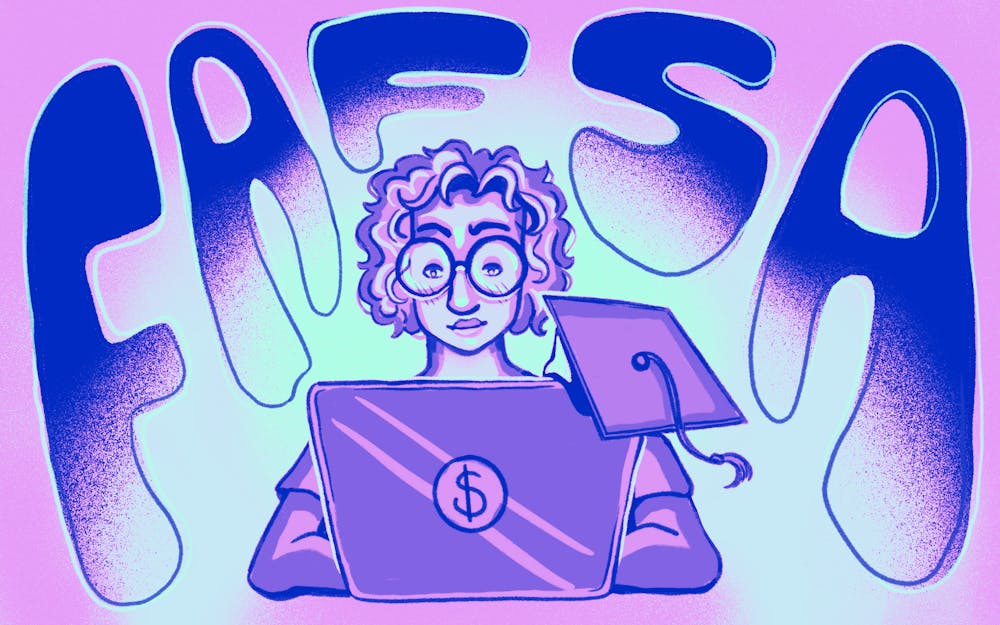Students across Indiana are preparing for another season of college applications with a delayed Federal Application for Student Aid (FAFSA) window.
The U.S. Department of Education, which announced the change in August, said delaying the start of the application window from Oct. 1 to Dec. 1 will leave time for officials to troubleshoot the remaining issues from last year’s FAFSA revamp, which was credited with decreasing filing rates nationwide as potential applicants encountered dozens of roadblocks. Overall filing rates saw a 2.5% drop, with a 9.1% drop for applicants in the Class of 2028.
That drop in FAFSA applications between last year and the year before is called the “filing gap,” and it has implications for college accessibility. Students who don’t submit the FAFSA are less likely to enroll in postsecondary education, and even late submission rates may cause enrollment declines linked to demographics like income, educational attainment, and race.
However, Indiana was an exception to this trend, with the lowest drop in filing rates in the country.
“We actually, compared to a lot of other states, fared very well considering the circumstances,” Michelle Ashcraft, senior associate commissioner and chief program officer for the Indiana Commission for Higher Education, said. The Commission works to increase college enrollment and accessibility for Indiana residents.
Ashcraft said these results were not coincidental.
For one, the commission spent last year’s cycle working in tandem with high schools, college campuses and grassroots campaigns to create outreach opportunities. These opportunities ranged from campus events to online informational campaigns.
Ashcraft also pointed out increased filing among students from low-income backgrounds and schools with larger populations of students from minority groups, both underrepresented populations often targeted in the commission’s awareness initiatives.
Ashcraft said the commission tried to reach students from groups with lower college-going rates, including students from various racial, ethnic, and gender identities. The commission also tried to reach lower-income students and students living in rural areas.
“Our outreach efforts seem to hit the populations that we knew that we needed to,” Ashcraft said.
That success came down to statewide coordination efforts.
“It really was kind of all hands on deck,” Ashcraft said. “Thanks to the great work of many of our campus partners and school counselors, lots of community organization partners and philanthropy partners across the state, we really did a lot to get the word out.”
Also key to narrowing the filing gap was Senate Enrolled Act 167, a piece of legislation passed by the Indiana State Senate in 2023 requiring all high school seniors to file the FAFSA or submit an exception waiver. For many seniors, this rule may have not only increased the pressure to file, but increased awareness at a pivotal point early in the cycle.
That’s what first sprang to mind for Carmel High School senior Ren Sethupathi.
“I think this year they're requiring it for Indiana students,” Sethupathi said. “I got an email about it.”
Sethupathi attends a school with programs to help students through the college process.
"We have a College and Career Resource Center…[with] information about colleges, scholarships, FAFSA, any post high school plans,” Sethupathi said. “That's what me and a lot of other seniors use.”
These resources provide key support for students like Sethupathi, who acknowledged confusion about key FAFSA details and terminology. Being overwhelmed is common for high schoolers approaching the college process, who Sethupathi said normally don’t learn about the form until senior year.
Sethupathi has seen firsthand that such awareness can have a transformational impact.
“I have a friend who was only going to apply to Ivy Tech because from middle school, he was like, that's the only thing I can afford,” Sethupathi said. “But after learning about scholarships and the FAFSA, his college plan has definitely changed.”
For seniors worrying about a continuation of last year’s flawed rollout, the best plan might be an early start, according to Jackie Kennedy-Fletcher, the assistant vice provost of enrollment management and executive director of financial aid at IU.
Kennedy-Fletcher said the most important strategy for a smooth filing experience is to take initiative.
“As soon as the FAFSA becomes available, [students] should complete it immediately,” Kennedy-Fletcher said. “Do not wait until March or April to complete the form. Do it as soon as it becomes available.”
The 2025-2026 FAFSA will be available online starting Dec. 1 2024, and IU Student Central recommends applying before April 15. Students can access the form on the Federal Student Aid (FSA) website, which also contains information about how to apply.




